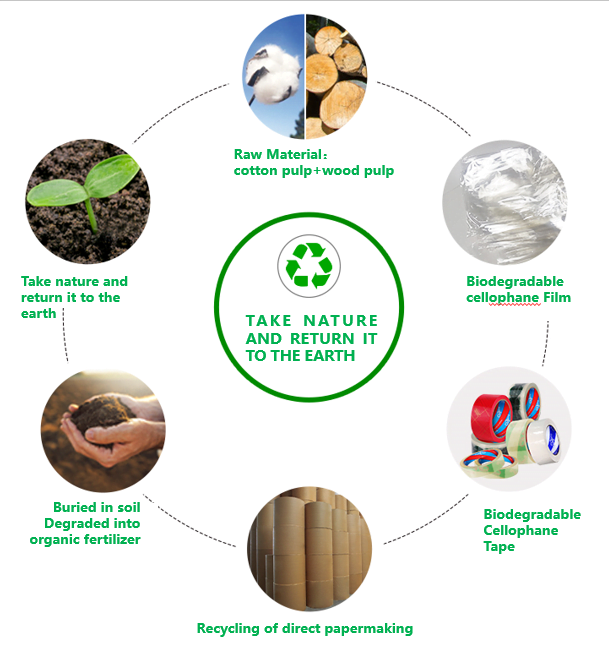Biodegradable tapes have become a popular alternative to traditional plastic tapes due to their eco-friendliness and sustainability. They are made from natural materials, such as cellulose and PLA, which decompose quickly in the environment without leaving any toxic residues. However, there are differences in the advantages and disadvantages of cellulose and PLA biodegradable tapes. In this article, we will compare the benefits of cellulose biodegradable tape over PLA biodegradable tape.
Cellulose Biodegradable Tape Advantages
- More Sustainable Material
Cellulose is a renewable and abundant natural polymer that is derived from plant cell walls, mainly from cotton, wood pulp, and other plants. It is biodegradable, recyclable, and compostable, making it a highly sustainable material for packaging and other applications. On the other hand, PLA is derived from corn and other crops, which raises concerns about global land use and food security. - Superior Strength and Durability
Cellulose biodegradable tapes are stronger, more durable, and have higher adhesion than PLA biodegradable tapes. They can withstand rigorous handling during transportation and storage without breaking or peeling off. Also, cellulose tapes have excellent tensile strength and tear resistance, which makes them suitable for sealing and bundling heavy packages. - Better Resistance to Moisture and Heat
Cellulose tapes have excellent resistance to moisture and heat, making them ideal for use in humid and hot environments. They do not buckle or lose their adhesive properties even when exposed to water, humidity, or heat, which ensures reliable sealing of packages. Conversely, PLA tapes may soften, deform or lose their adhesive properties when exposed to moisture or heat, which can compromise the integrity of packages. - Low Static Charge
Cellulose tapes have low static charge, which prevents them from attracting dust, dirt, or other contaminants that can damage sensitive products or compromise the hygiene of the packaging environment. Unlike PLA tapes, cellulose tapes do not contribute to electrostatic discharge (ESD), which protects the quality and safety of electronic components and other delicate items. - Affordable and Widely Available
Cellulose biodegradable tapes are more affordable and widely available than PLA biodegradable tapes. They are produced in large quantities and distributed by various manufacturers, which ensures competitive pricing and easy access to the market. Moreover, cellulose tapes can be customized and printed with logos, branding, and other designs, which enhances the visibility and recognition of the brand.
PLA Biodegradable Tape Advantages
- Biodegradable in Various Environments
PLA biodegradable tapes can biodegrade in different environments, such as industrial composting facilities, home composts, and marine environments. They undergo hydrolysis, a natural decomposition process, which converts them into water, carbon dioxide, and biomass within a few months to several years, depending on the prevailing conditions. In contrast, cellulose biodegradable tapes may require specific conditions, such as high temperature and humidity, to biodegrade efficiently. - Lower Carbon Footprint
PLA biodegradable tapes have a lower carbon footprint than cellulose biodegradable tapes. They emit less greenhouse gases during their production and biodegradation stages, which reduces their impact on climate change. Also, PLA is derived from renewable crops that capture carbon dioxide from the air during their growth, which further offsets their greenhouse gas emissions. - Versatile and Flexible Material
PLA biodegradable tape is a versatile and flexible material that can be used for various applications, such as food packaging, medical devices, and 3D printing. It has good thermal stability, transparency, and barrier properties, which enhances the preservation and safety of the packaged contents. Moreover, PLA can be processed into different forms, such as films, fibers, and sheets, which widens its scope of use.
Phần kết luận
In summary, both cellulose and PLA biodegradable tapes have their advantages and disadvantages depending on the specific requirements and preferences of the users. However, cellulose biodegradable tape offers superior strength, durability, resistance to moisture and heat, low static charge, affordability, and availability compared to PLA biodegradable tape. Therefore, cellulose biodegradable tape is a more sustainable and reliable choice for packaging and other applications that demand high performance and environmental responsibility.

